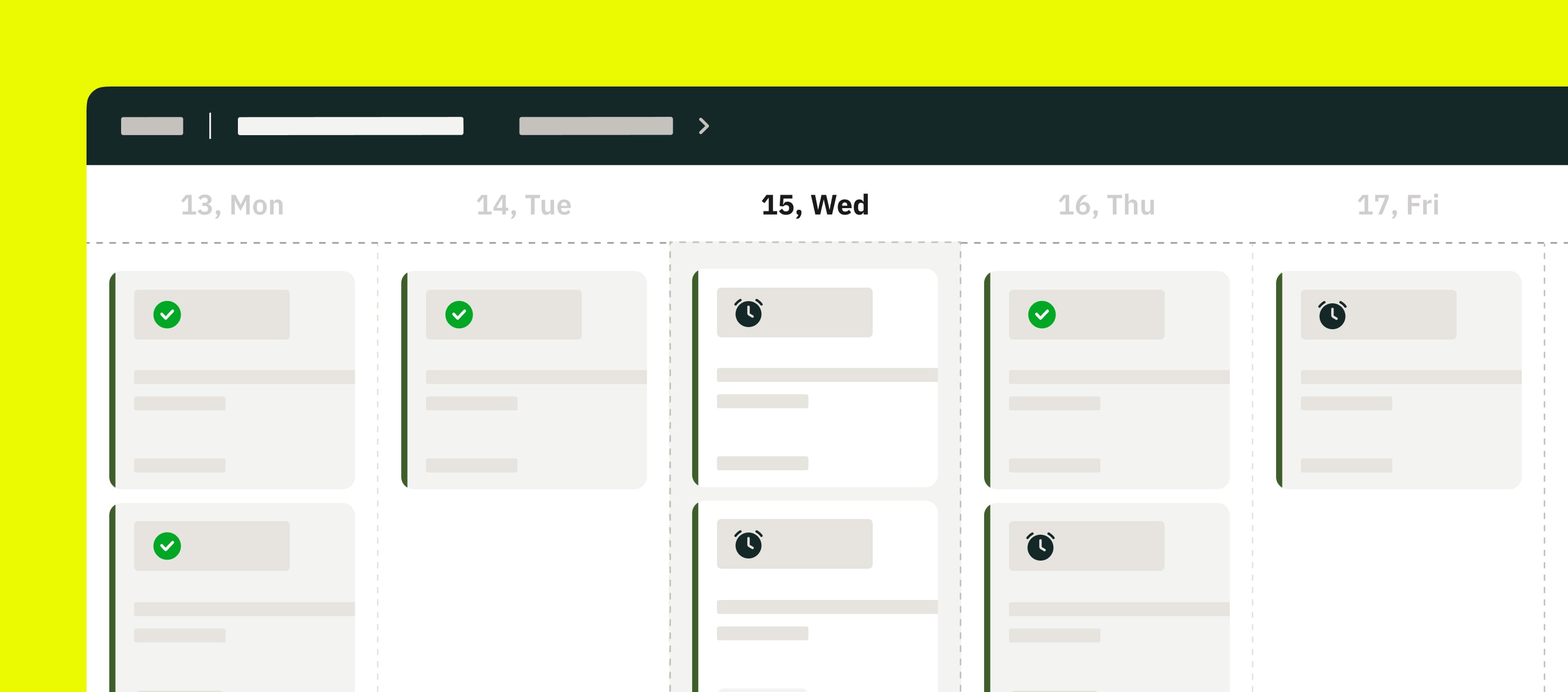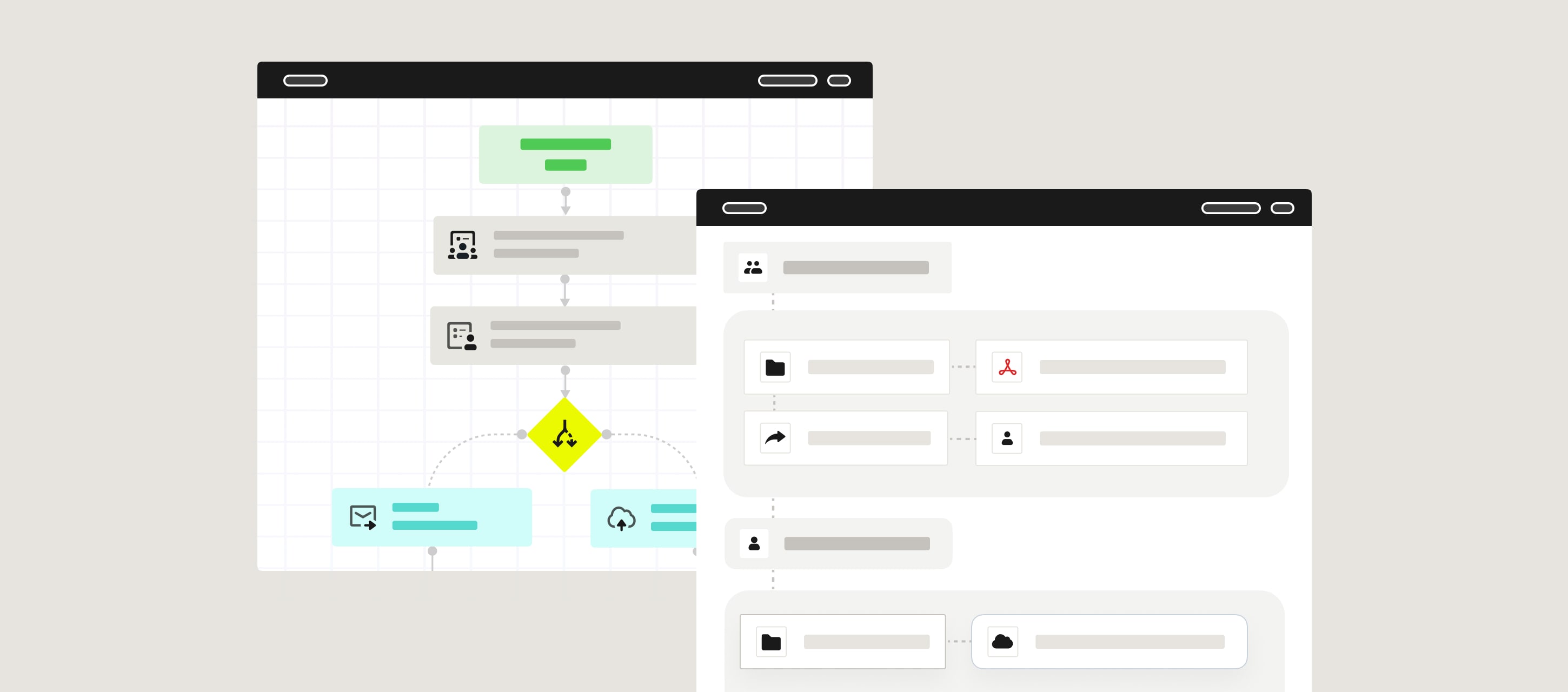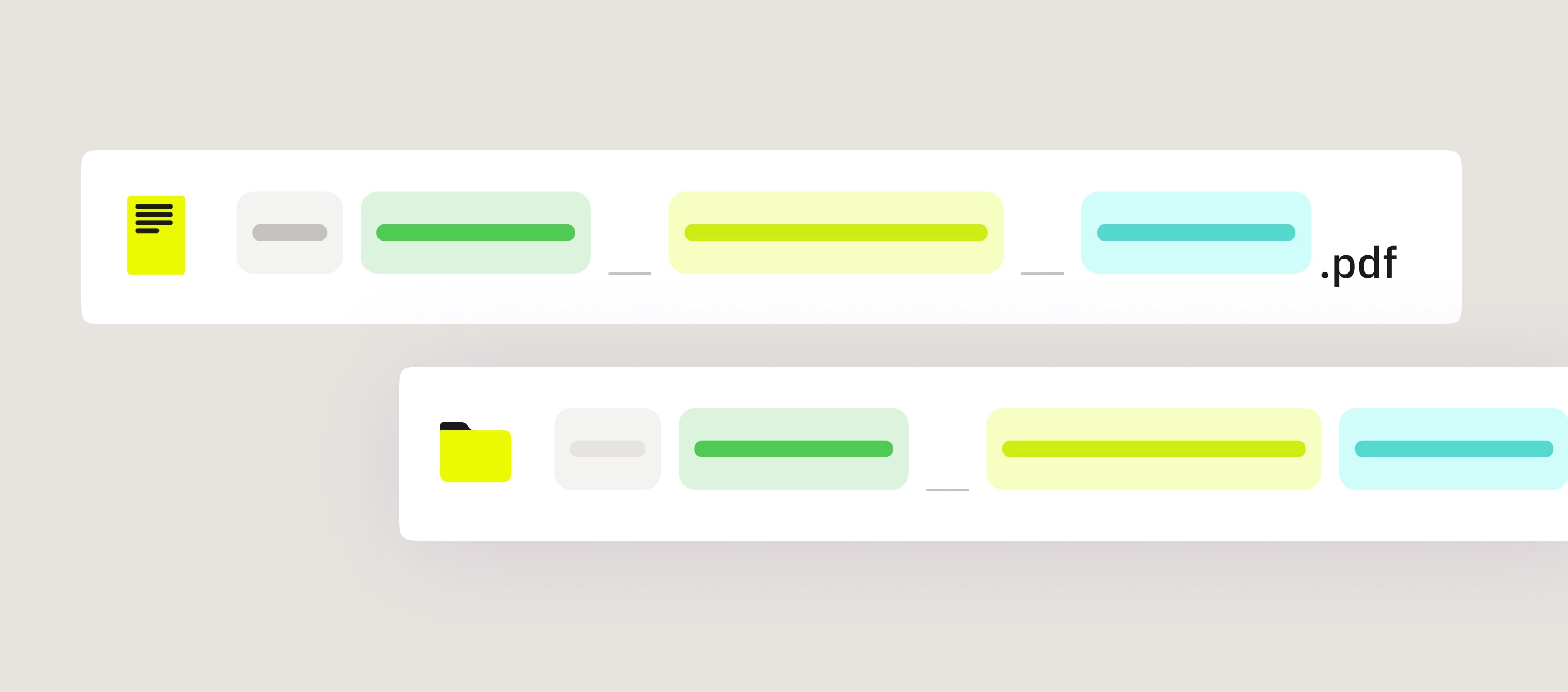In today’s fast-moving field environments, paper forms just can’t keep up. Manual entry wastes time, creates errors, and slows everything down, from safety checks to compliance reports.
That’s why more field teams are turning to automated form filling.
With features like pre-filled fields and auto-generated reports, this tech doesn’t just speed things up – it removes the busywork, often entirely.
Here’s how form filling works – and why it can be game-changer for field operations.
Contents:
Why It Makes Sense to Automate Your Form Filling
The short answer? Because it makes data collection and management easier – across teams, tasks, and every corner of your field operations.
And that’s just the beginning. Under the hood, form fill automation delivers big on these key areas:
Efficiency
Capture and transmit data in real time using mobile devices – no manual entry, no transcription errors. Even offline. Perfect for remote job sites where signal is spotty or nonexistent.
Accuracy & Security
Automation gives you control over how information gets filled out. For example, your forms can automatically prefill certain details, like turbine ID or site location, so your crew doesn’t have to type them again and again. Forms can also do math for you, calculating totals or averages as the data is entered.
Built-in Compliance
Create digital checklists, inspection forms, safety guides, and reports that align with industry regulations and internal policies. Everyone – from field crews to contractors works off the same version, minimizing miscommunication and keeping teams in sync.
Customization That Works
You’re not locked into a static document. Form fill automation gives you freedom to build what makes sense for the job at hand. Everything from layout to inputs can be tailored to fit your tasks.
Convenience in the Field
Working in the field isn’t always pen-and-paper friendly. Between wind, rain, cramped crane cabins, and awkward positions on ladders, carrying around paper can be tricky. And mobile forms keep things tidy, fast, and weather-proof.
Time & Cost Savings
No more printing, scanning, or emailing individual files. Forms are completed, routed, and archived automatically – saving you hours and reducing overhead.
This list can go on. Because the true advantage of form fill automation is its versatility and adaptability to any process, be it audit, maintenance, training, contract negotiation, or you name it.
Read More Read More Ten best Jotform alternatives for data collection in 2025
How to Automate Form Filling with Fluix
New to Fluix? Fluix is a field productivity platform that helps teams in safety-critical, highly regulated industries digitize and automate the way work gets done.
And when it comes to form filling? We make it simple, fast, and built for the field. Here’s how it works, step by step.
1. Create Mobile Forms
Start with any form – fillable PDFs or mobile-optimized web forms. Or ones you build from scratch in the Fluix Form Builder.
You can:
- Upload existing PDF forms and convert them to mobile-friendly web versions
- Drag-and-drop fields like text boxes, checkboxes, dropdowns, signatures, and more
- Customize templates from the Fluix library or create your own from a blank draft
Need to capture rich field data? No problem. Fluix supports photos, annotations, and even barcode scanning.
And if your workflows demand flexibility, we have Dynamic Forms for you. These mobile-first, fully customizable forms adapt to each task in real time – showing or hiding fields based on previous inputs. That means cleaner forms, faster completion, and less room for error.
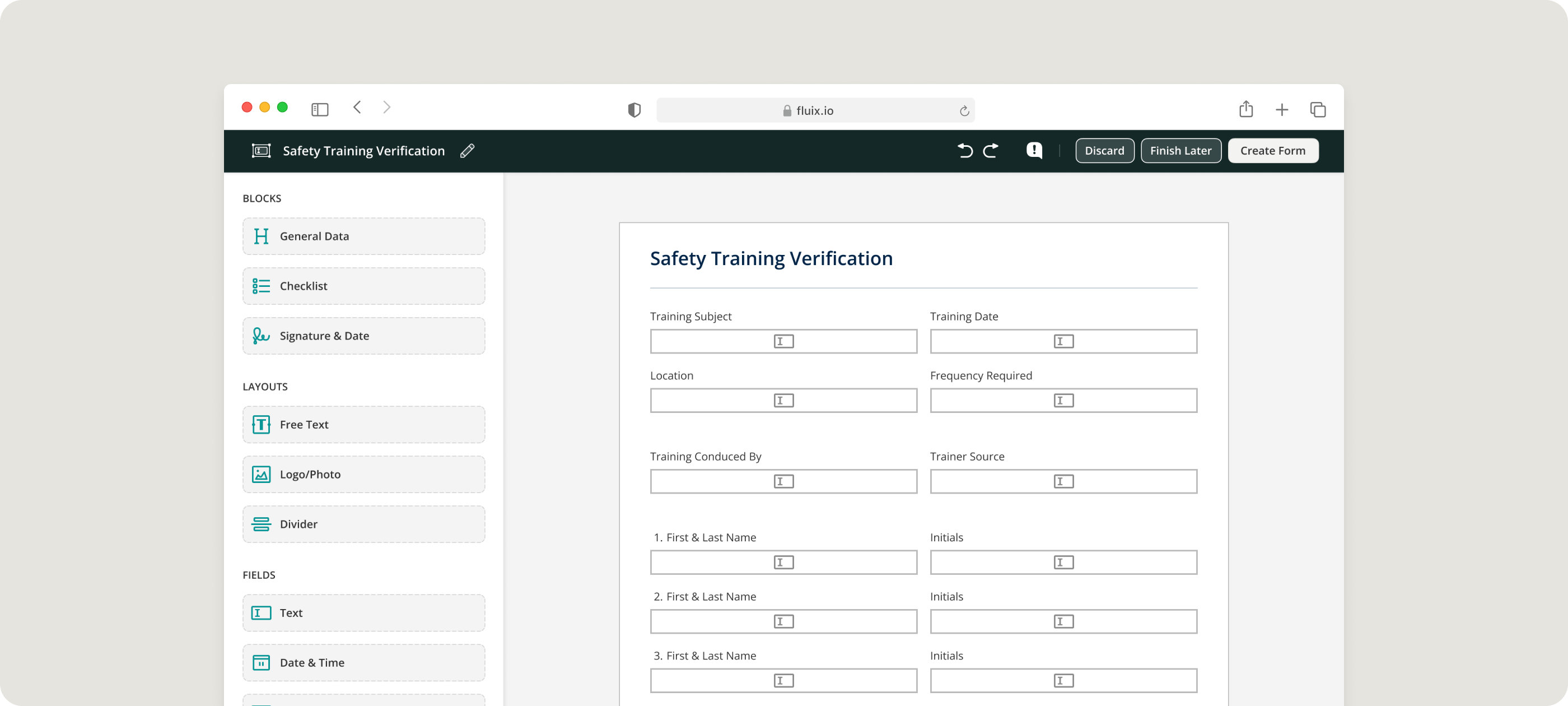
By the way, we also have the Convert My Form feature if you’re short on time. Just send us your form requirements however you’d like: in a text description drawing, or PNG, PDF, JPG, DOC, or Excel file. Our team will turn it into a working form that looks just how you’d like it to.
2. Auto-Fill with Preloaded Data
When ready, you can automatically populate forms with data from various sources, such as
- Your CRM or ERP systems
- Previous submissions in Fluix
- External sources
This ensures data accuracy, speeds up completion, and keeps everything in sync – without the manual input.
Synergy uses Fluix’s prefill feature to take some admin work off their field teams. Their office-based teams prepare the forms ahead of time, so their installers can open them onsite and get straight to work.
3. Assign and Automate with Workflows
Now it’s time to add your forms to a workflow and assign them to people who will be filling them out. You can send them to specific team members, like Jamie the safety officer, or to groups like the entire HSE team.
With automated notifications and reminders, your field teams will be alerted when they have pending tasks. Once a particular form is completed, it’ll move down the workflow for distribution or storage, depending on the rules you set.
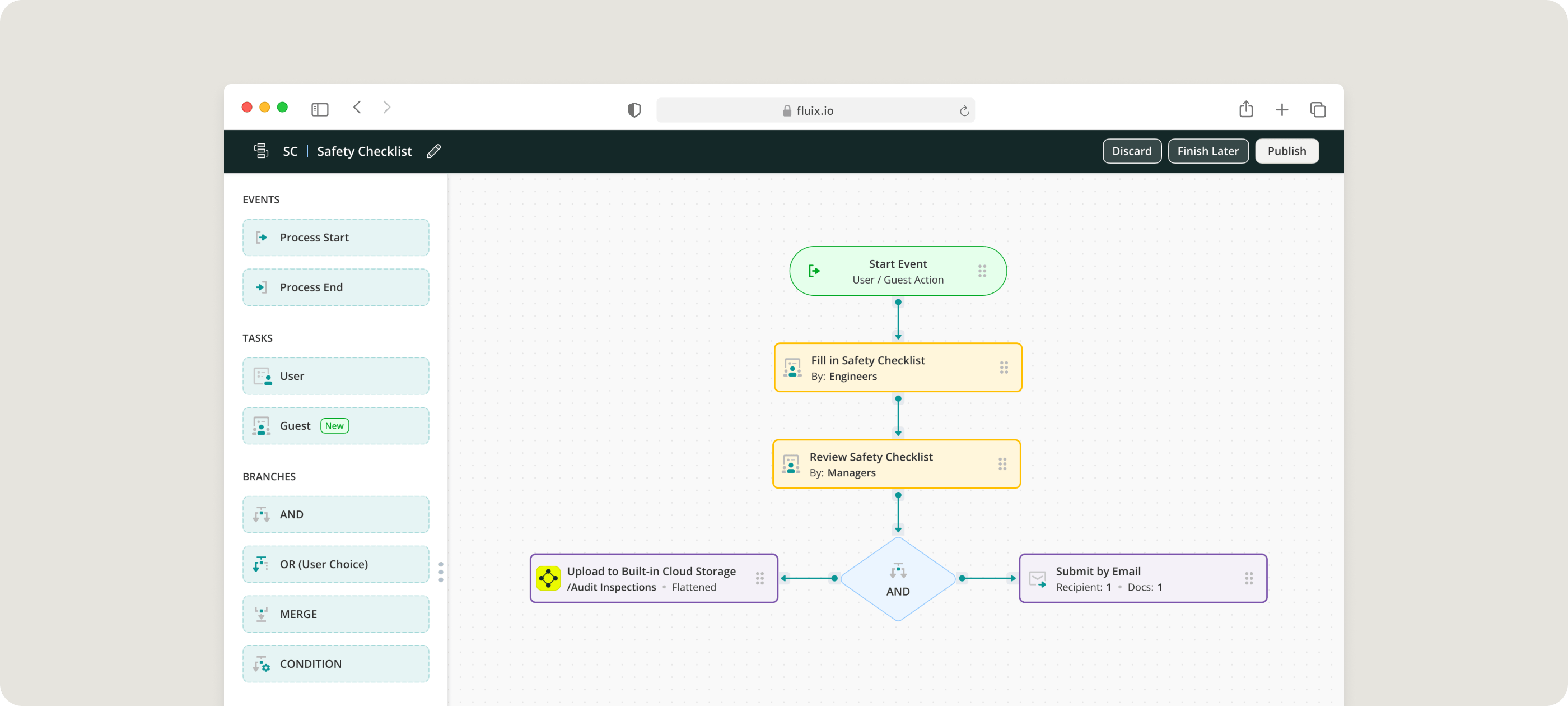
4. Collect Field Data (Online or Offline)
Your teams fill out forms right on their tablets or phones – even with no internet.
Fluix supports:
- Text, numbers, dropdowns, and checkboxes
- Image capture, annotations, date stamps
- Geotags, QR/barcode scanning
- Real-time validation to catch mistakes before submission
And when the connection is back? Everything syncs automatically.
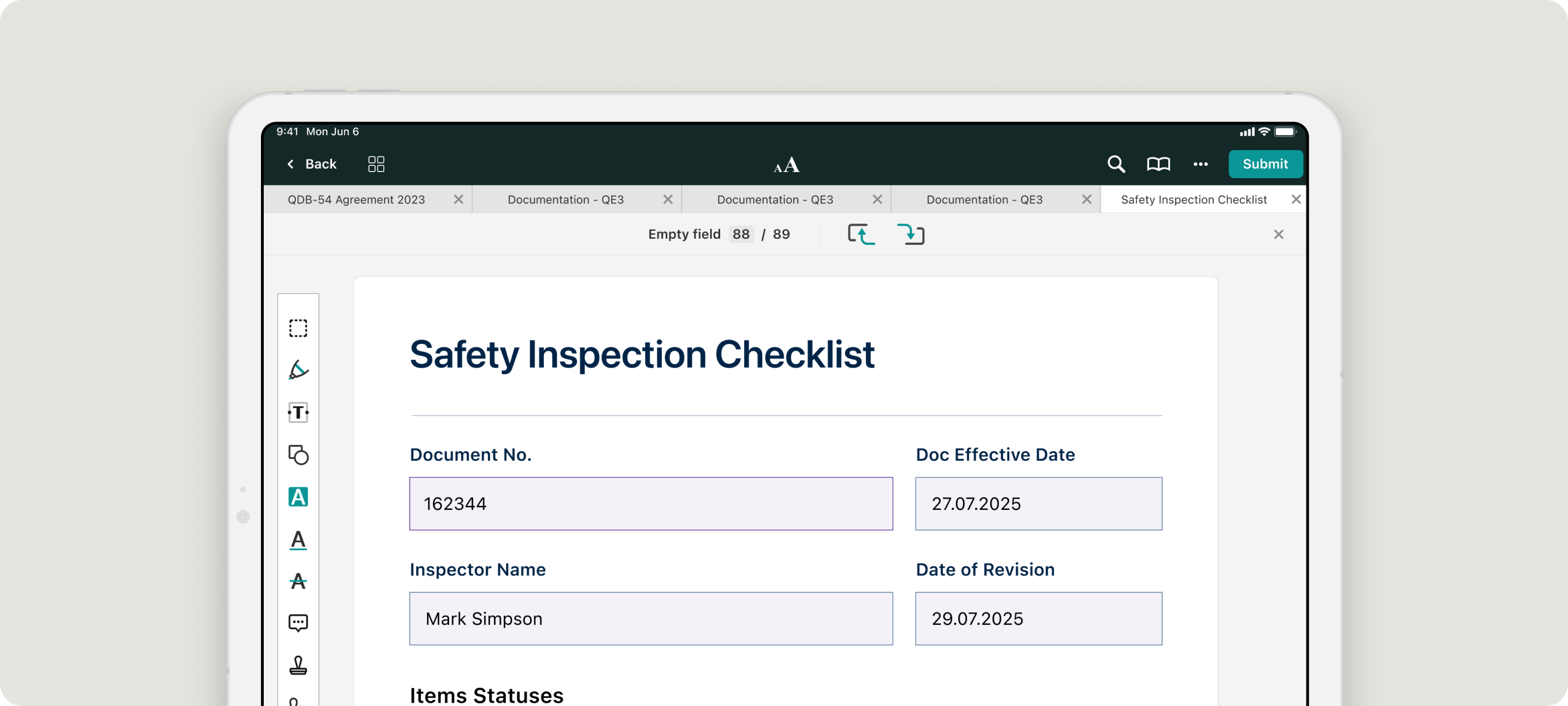
When files are built to catch the right details, it pays off. Bath Experts, for example, cut their customer revisits in half once they customized and standardized their forms in Fluix.
5. Capture E-Signature on the Spot
Need sign-off? No problem.
Fluix lets users draw or select electronic signatures directly on their devices. It’s secure, legally binding, and saves time compared to chasing paper.
6. Store and Share Automatically
Once the form is filled and signed, Fluix takes care of the rest. Based on your workflow rules, it can:
- Store documents in the cloud
- Send files to stakeholders via email
- Sync with your internal systems or storage solutions
Once all the data is collected, you can send your forms to the right folder in your cloud storage or by email to whoever needs them. Routing happens automatically based on the workflow rules you set up.
SAS loves this kind of automation. As a major airline with thousands of team members, they need a reliable way to keep their flight operations documents organized and secure. With Fluix, each completed form is automatically backed up in the cloud. This makes it easy to retrieve important records even if the person who submitted them isn’t around anymore.
Wrapping Up
Automated form filling has become a game-changer for many industries, offering a more efficient alternative to paper forms. Using this technology is a crucial step towards ensuring that your field team can manage operations faster and safer.
Fluix can help you with that by removing the manual steps that slow you down. No printing, scanning, uploading, or chasing approvals. Just seamless, secure, and smart form fill automation that fits how your field teams actually work.
Ready to improve your ops? Let’s automate the right way.


